
Adult male Cerulean Warbler, June 15, 2020
It was another very hot and humid day - 81 degrees at 8:30 in the morning, and would it get up to 102 degrees at my house later in the day. I decided to go up to the Blue Ridge Parkway and Route 610 where it might be cooler. I didn't expect to see much as I got a late start and the foliage would be dense, but there was always the chance of seeing juvenile warblers. I got onto the parkway at 10:15, and had planned to take my usual route up to 610 at mm. 2, then get back onto the parkway at mm. 4, and then head farther south on the parkway. But I hadn't gone very far when traffic was at a complete stop. This section of the parkway is being re-surfaced, and I had to wait for 15 minutes in a line of cars until a guide vehicle showed up to move traffic through the one open lane. So it was 10:30 when I got onto 610, and my first stop was at the old tower.
I have been seeing five warbler species at that stop for more than a month, including a male Cerulean Warbler that I have seen each time, and a female Cerulean Warbler that sometimes made a very quick showing. Here's a photo of the male Cerulean Warbler that I took on June 15.

Adult male Cerulean Warbler, June 15, 2020
This morning, I encountered an entire family of Cerulean Warblers at that stop. I have found that male warblers often sing during the spring when calling for a mate, but also when youngsters are out of the nest, and the birds want to let each other know where they are. Young males may also be learning and practicing their calls. Cerulean Warblers lay 3 to 5 eggs, and this morning, I saw at least 4 or 5 Cerulean Warblers at that stop, and heard at least 3 of them calling. These warblers were moving quickly from one place in the trees to another, and I was able to get some quick photos of some of them. Identifying age and sex of some of them can be a challenge, and I would appreciate comments. First consider the females. The first one lacks the male breast band and has a wide yellow supercillium (eyebrow). It might be a first fall female, as photos I have previously taken of adult female Cerulean Warblers appear to have more blue in their crown, but the green crown on this bird might be a lighting artifact from the leaves.
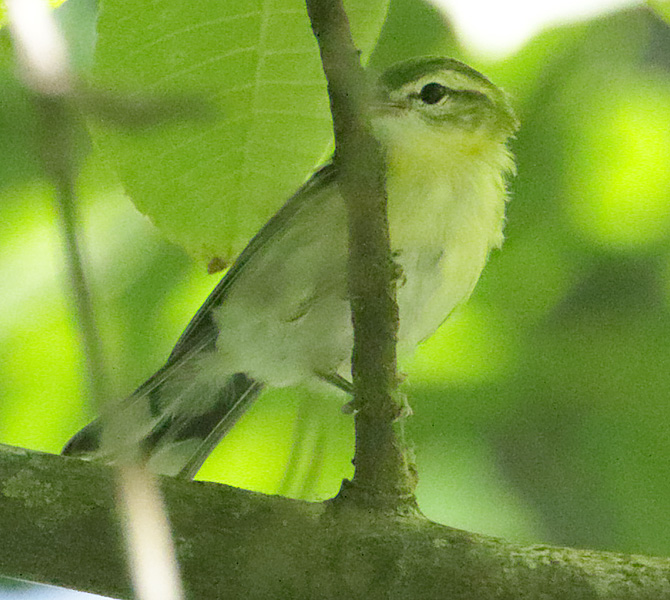
Female Cerulean Warbler (#1)
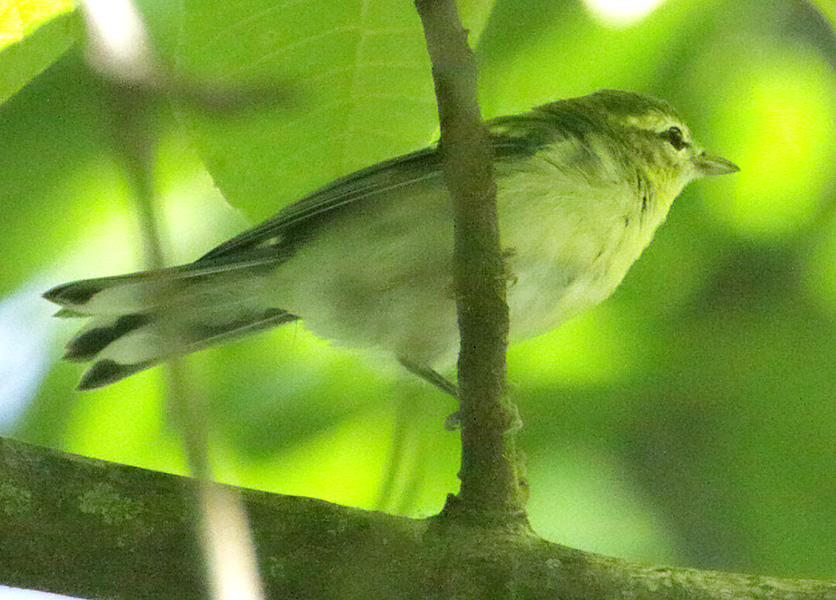
Female Cerulean Warbler (#1)
The next two photos may be of the same bird or a different female.
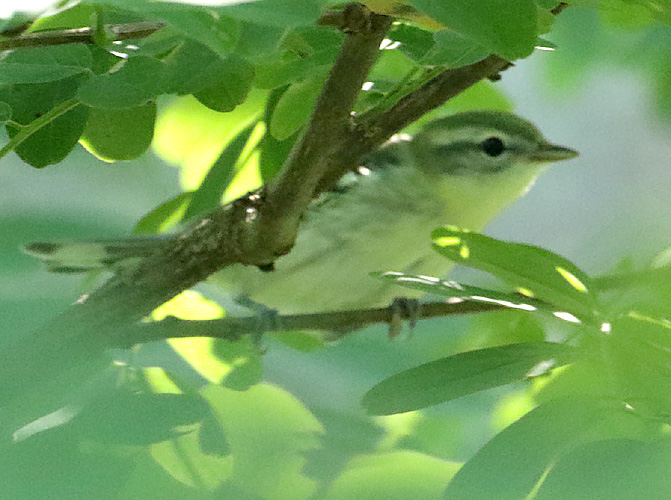
Female Cerulean Warbler (#2)
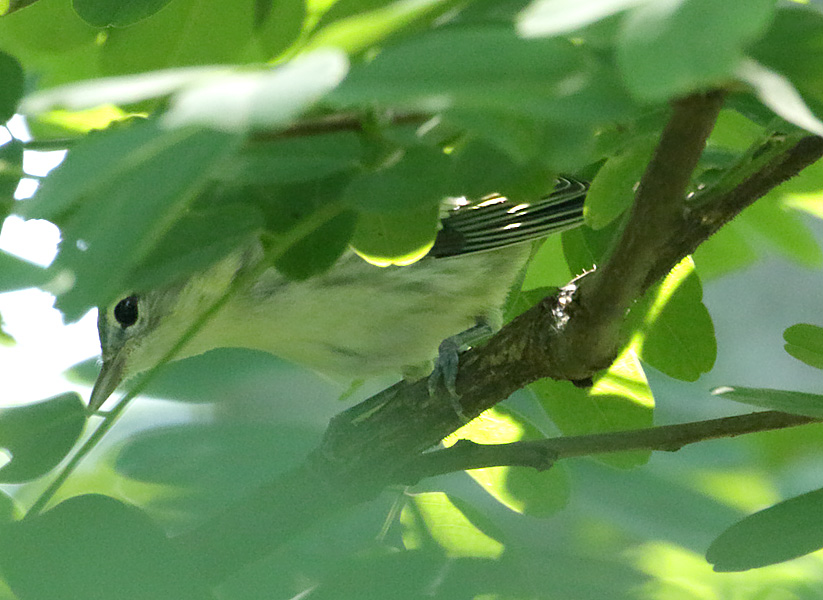
Female Cerulean Warbler (#2)
I saw another first year bird that might have been a female, but first fall males are similar except for a bit of a bluish tint on the upper parts.
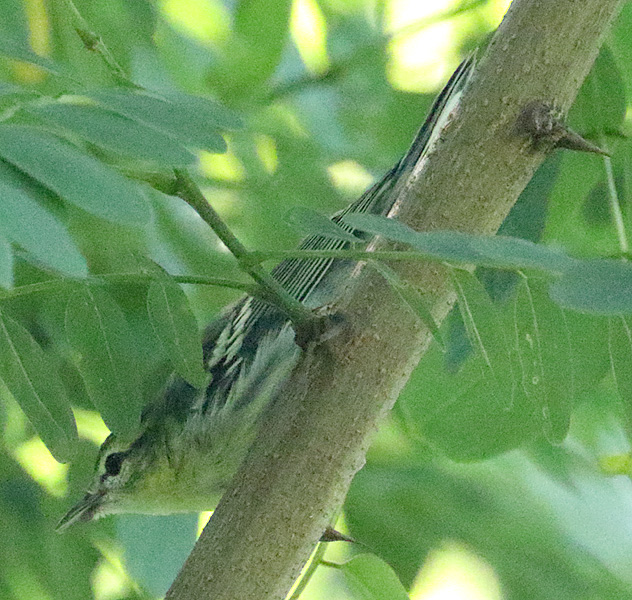
First fall Cerulean Warbler (#3)
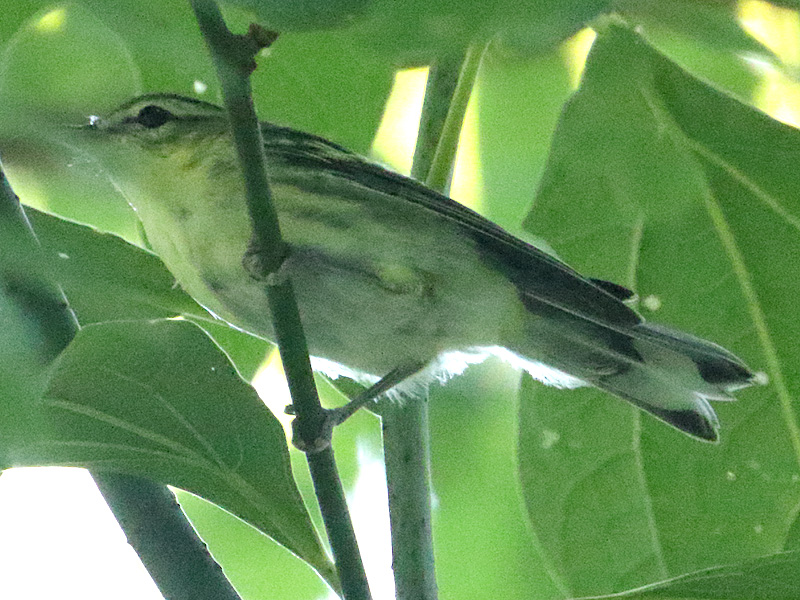
First fall Cerulean Warbler (#3)
There was another first fall bird that was most likely a male, as it did have a lot of blue in its crown.
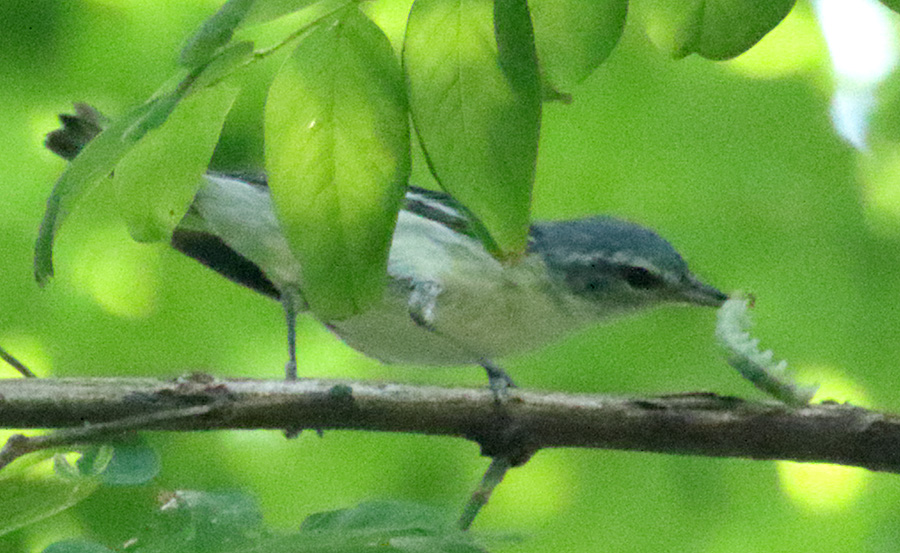
First fall male Cerulean Warbler (#4)

First fall male Cerulean Warbler (#4)
The next first fall Cerulean Warbler might have been the same as one of the above birds, but did seem to have a bit of a bluish cast to its upper parts. It clearly showed some juvenile brown wing feathers.

First fall Cerulean Warbler (#5)

First fall Cerulean Warbler (#5)
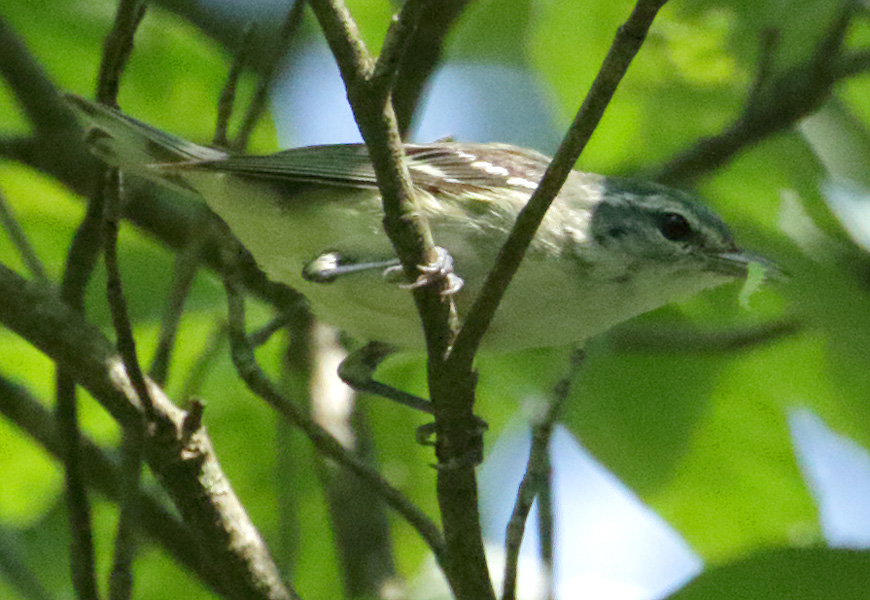
First fall Cerulean Warbler (#5)
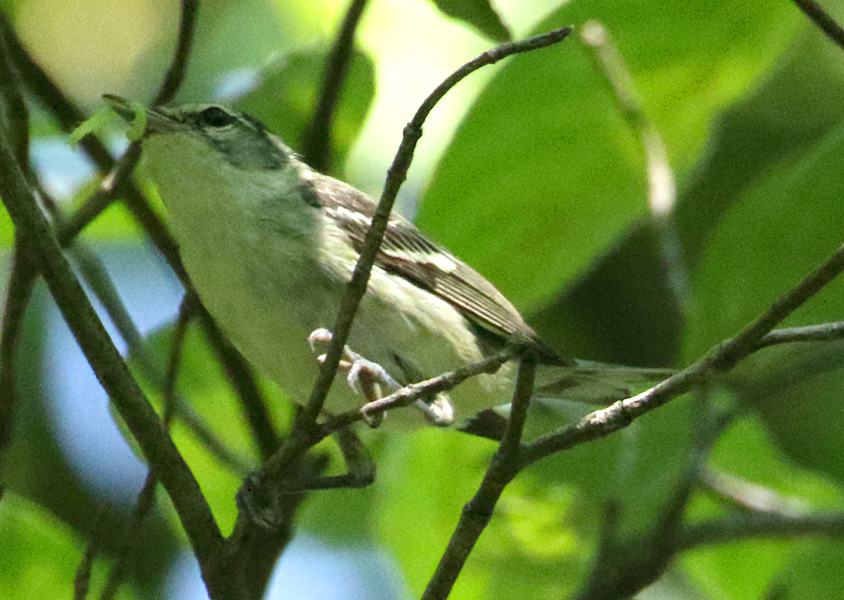
First fall Cerulean Warbler (#5)

First fall Cerulean Warbler (#5)
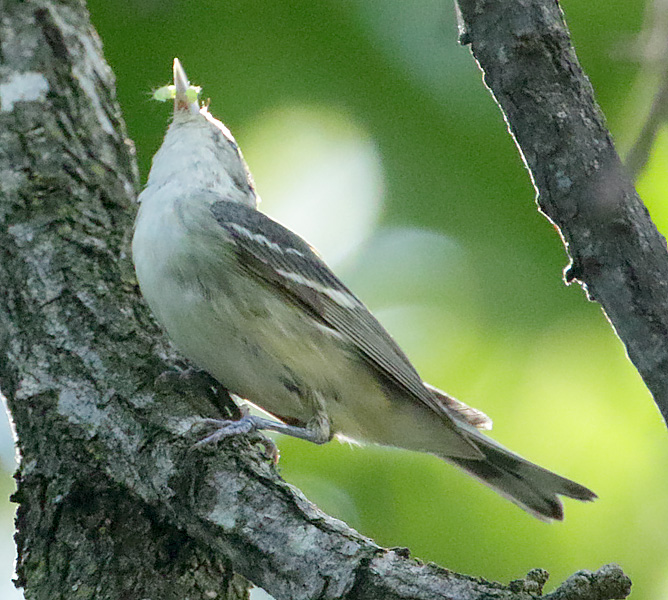
First fall Cerulean Warbler (#5)
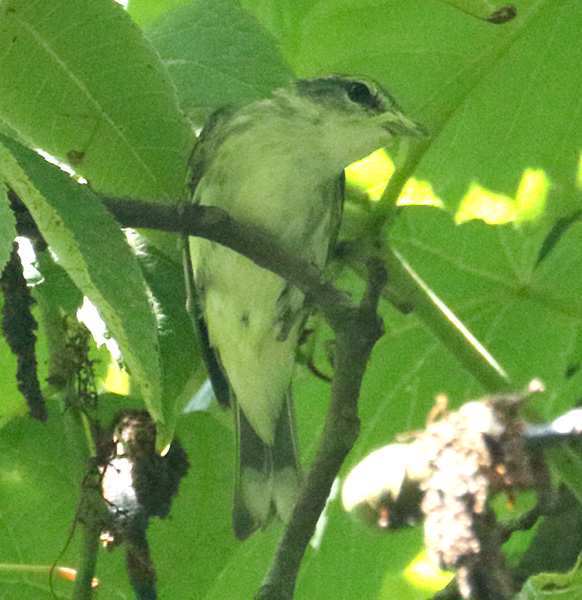
First fall Cerulean Warbler (#5)
Now consider the males. I saw two that were first spring males that appeared to be molting into their full adult plumage. First spring males can have a whitish supercillium that is not apparent in full adult males. However, these two males had a lot of dark (black?) facial feathers, and messy, rather than narrow chest bands.
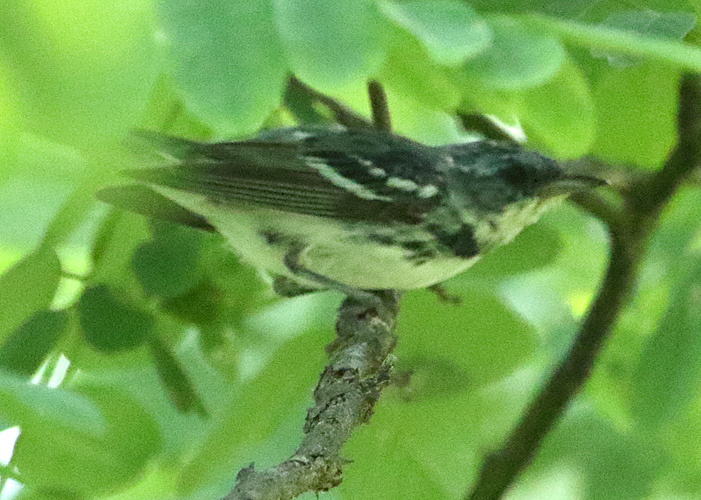
Male Cerulean Warbler (#6)
The other molting male only had one white wing bar on each side rather than two. Some of its juvenile brown wing feathers are also visible.
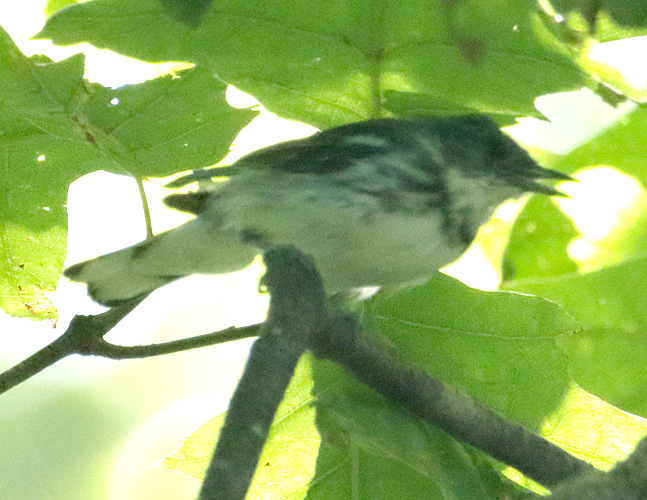
Male Cerulean Warbler (#7)
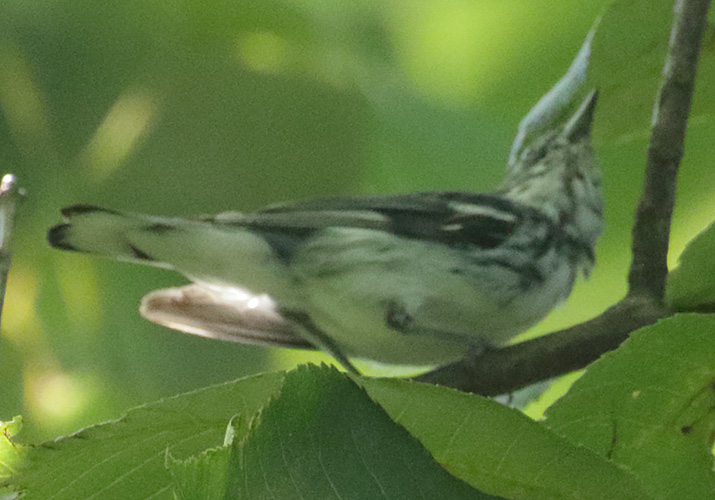
Male Cerulean Warbler (#7)
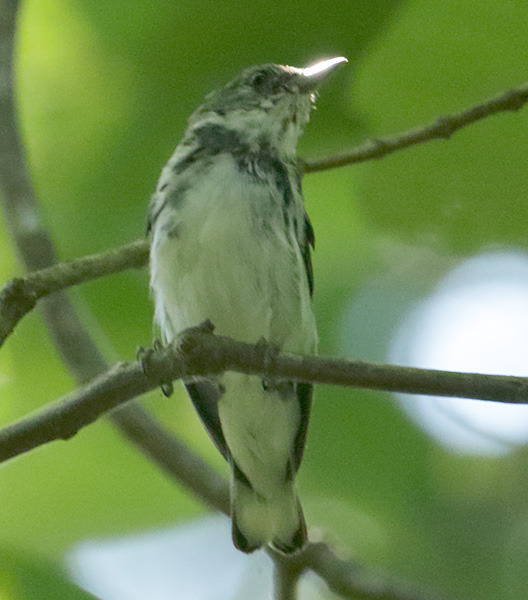
Male Cerulean Warbler (#7)
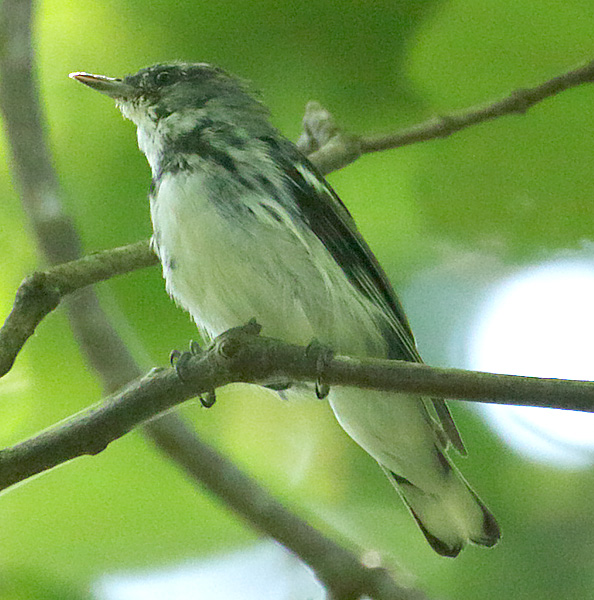
Male Cerulean Warbler (#7)

Male Cerulean Warbler (#7)

Male Cerulean Warbler (#7)
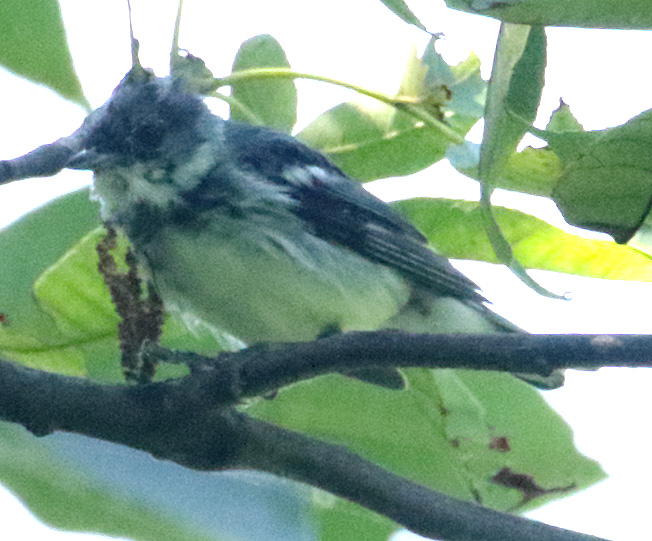
Male Cerulean Warbler (#7)

Male Cerulean Warbler (#7)
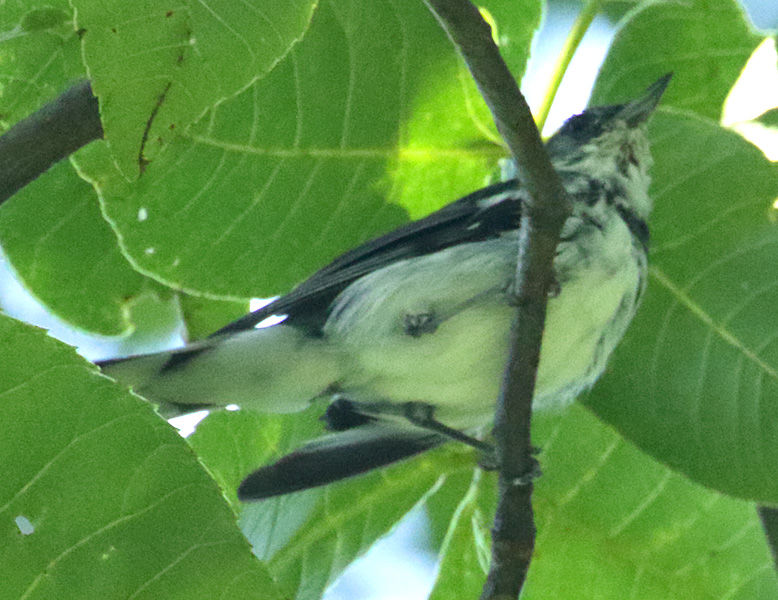
Male Cerulean Warbler (#7)
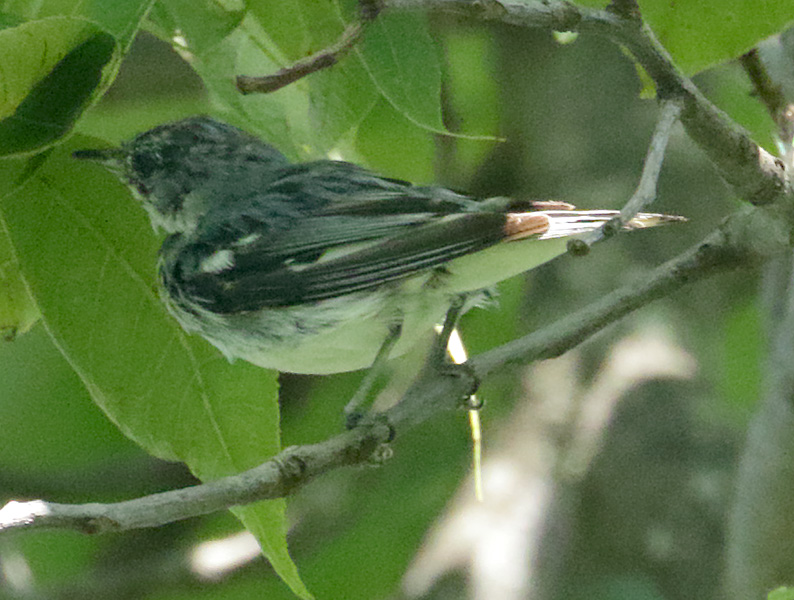
Male Cerulean Warbler (#7)
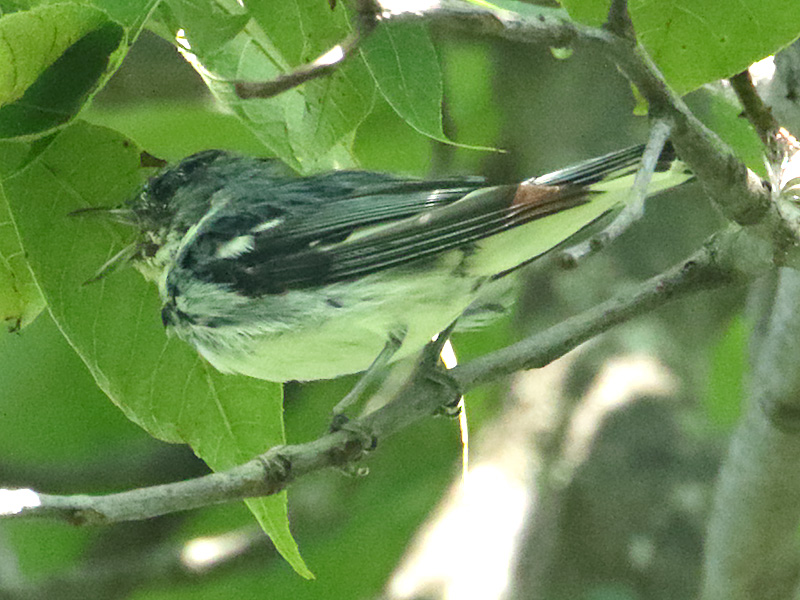
Male Cerulean Warbler (#7)
Interestingly, I did not see the adult male Cerulean Warbler at that stop.
I continued south on 610, heard an Ovenbird, American Redstarts, and a Worm-eating Warbler, and saw a Hooded Warbler and an adult female Cerulean Warbler.
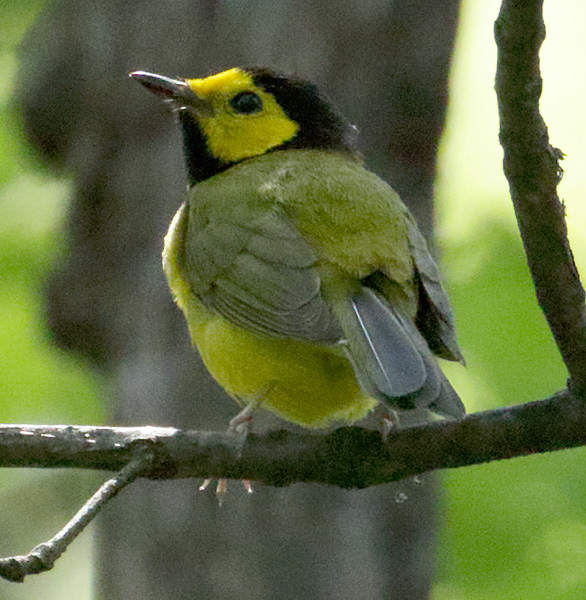
Male Hooded Warbler
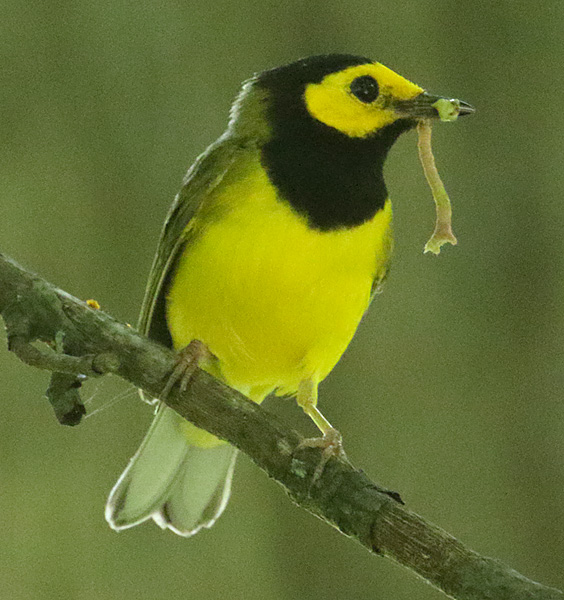
Male Hooded Warbler
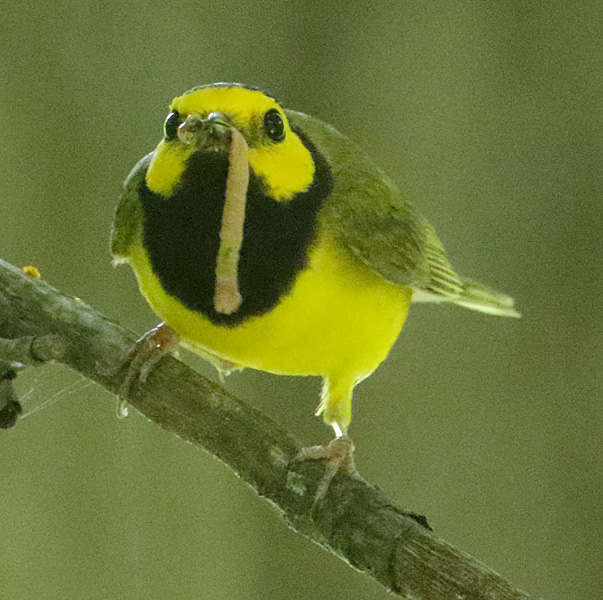
Male Hooded Warbler
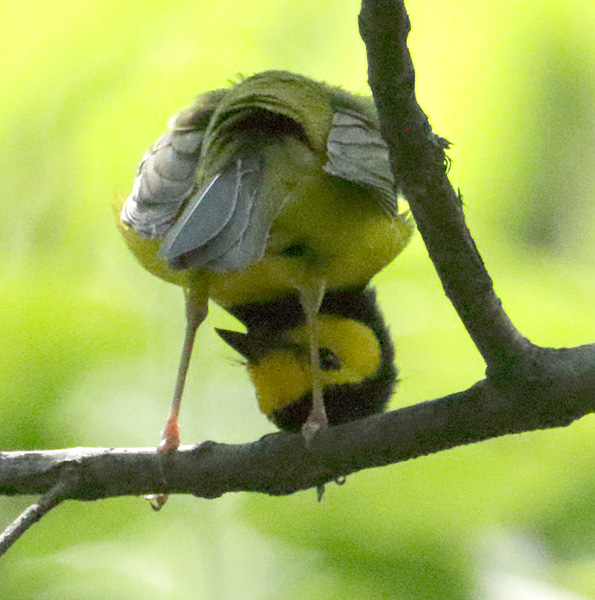
Male Hooded Warbler

Female Cerulean Warbler (#8)
When I got to the intersection of 610 and mm. 4 of the parkway, I could see that the road work on the parkway was continuing there, so I turned around and took 610 all the way to 250 and I-64.